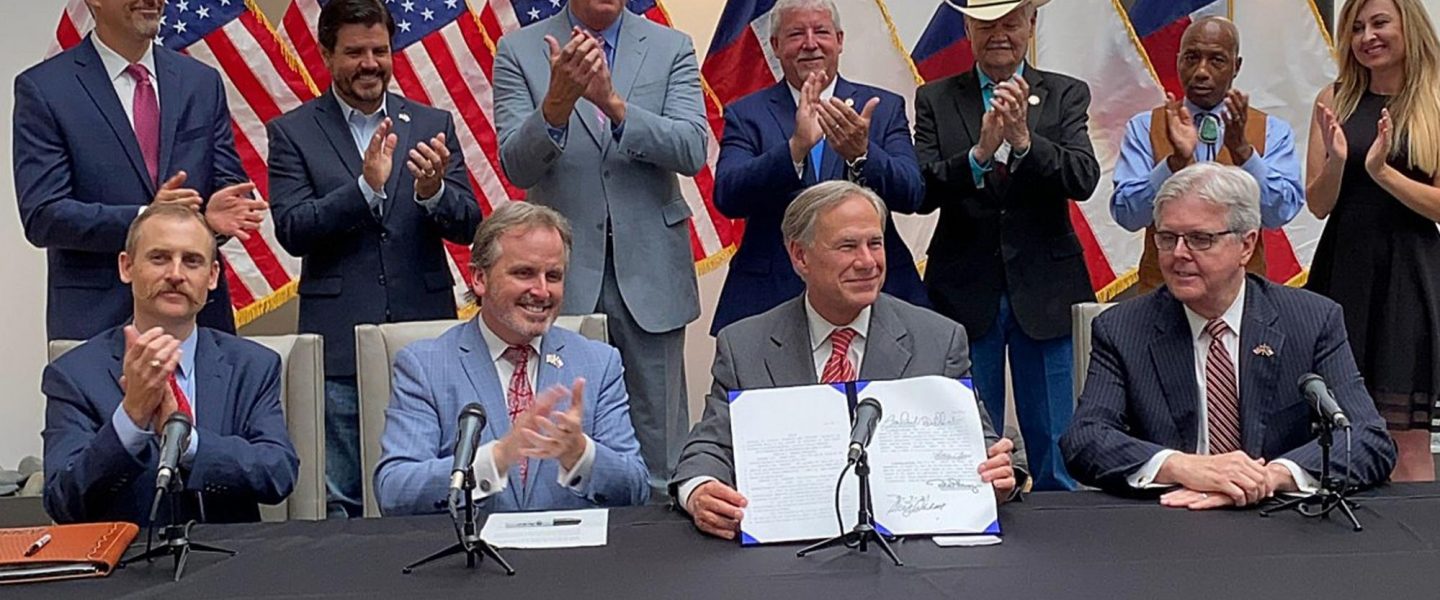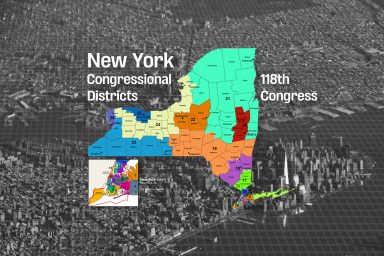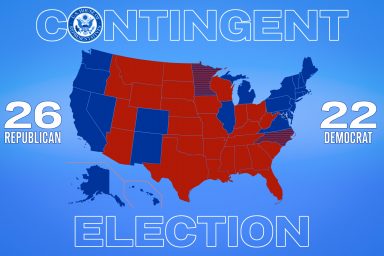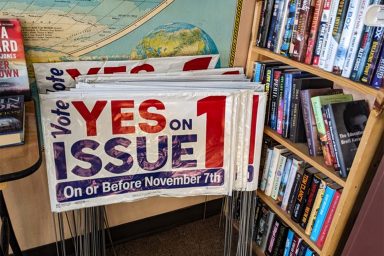In an extreme show of gerrymandering, state leaders are trying to put one district completely inside of another district. It’s just one of several tactics to split the Democratic vote.
Have you ever heard of a voting district shaped like a donut? In Texas, Republicans are using extreme gerrymandering tricks to dilute Democratic votes — including placing one state House district entirely inside another.
This oddly shaped voting district near Fort Hood has one purpose: to split up the growing Democratic majority in the area and give the smaller surrounding conservative population more power.
“Now [Republicans’] only stronghold is the rural areas that help make up the difference. So they’re concerned that if they don’t do something drastically, then their power is going to erode,” said Texas state Rep. Ron Reynolds (D).
The proposed maps released by state House Republicans, in conjunction with similarly gerrymandered maps issued for the state Senate, are designed to maintain GOP control of the state legislature for the next decade. They in turn keep Texas Republicans in control of congressional redistricting, which impacts the balance of power in Washington. And when combined with increased voter suppression laws recently passed by the state legislature, they disenfranchise voters of color and put Democrats at a continuing disadvantage in both local and national elections.“The proposed maps. . .are disappointing but not surprising,” said Texas state Rep. Erin Zwiener (D). “They exacerbate widespread gerrymandering in Texas.”
“Our communities deserve to stay whole and communities of color deserve to have full representation without being diluted into multiple districts.” — Texas state Rep. Erin Zwiener (D)
Texas lawmakers are debating the new maps, including congressional district maps, in the state’s third special session, which ends next week.
The state is gaining two congressional seats because its population is exploding, up 16 percent from the last census in 2010, thanks almost entirely to increases among people of color. As drawn by Republicans, however, the new maps would actually eliminate a congressional district where Latinx voters are in the majority and do the same to Black voters as well, by pitting two African-American members of Congress against each other.
The proposed Texas House maps are just as blatant or more so. If approved, the number of state House districts where white voters are the majority will increase from 83 to 89, whileHispanic/Latinx-majority districts drop from 33 to 30 and Black-majority districts drop from seven to six.
As for the state Senate, the new maps would provide safe districts for Republicans whose constituents were becoming more diverse while providing no new districts where Latinx or African-American voters are in the majority. It also would take a district around Fort Worth, where Latinx, Black, and Asian voters have elected Democrats, and add seven whiter and more conservative rural counties to the mix.
“Our communities deserve to stay whole and communities of color deserve to have full representation without being diluted into multiple districts,” Zwiener said.
Going back to that donut-shaped House district, this isn’t the first time Republicans have gerrymandered the district in their favor. Twenty years ago, it included the entire city of Killeen, a Democratic bastion of voters of color. In 2010, Texas lawmakers split off 32,000 city residents into the nearby Republican-led district, and replaced them with 47,000 people from the more rural southwest portion of the county, which historically votes Republican, thus diluting the Democratic vote.
And it’s not just that county. The entire state is under siege, particularly the populations around Interstate 35.
“I’m particularly disappointed once again to see the I-35 corridor sliced and diced,” Zwiener said. “Buda, Kyle and San Marcos are some of the fastest growing communities in the nation and deserve to have a strong voice in their representation.”
The maps go hand in hand with Senate Bill 1, the Republican-conceived voter suppression law that will severely limit the number of legitimate, countable votes from Democrats in Texas, according to Reynolds and many activist groups. This law, signed by the governor last month, limits voting hours, eliminates drive-thru voting, adds ID requirements, and creates unusually harsh punishments — such as $1,000 fines and jail time — for election officials and poll workers who make small mistakes.
The law operates under the guise of preventing “voter fraud,” even though there was no evidence of such fraud in the 2020 election.
“[Republicans] know there’s no voter fraud, but they’re just doing it anyway,” Reynolds said. “Because they can’t just admit, well, we’re just doing it because we don’t want [Democrats] voting.”
Attempts to disenfranchise voters of color can also be clearly seen with the law’s elimination of drive-thru voting, which worked “extremely well for large urban areas,” especially heavily populated Harris County, said Reynolds. According to the Texas Civil Rights Project, 53 percent of drive-thru ballots were casted by Black, Latinx, and Asian voters, making the choice to end drive-thru voting a highly suspicious act given that people of color are more likely to vote Democratic.
In the extremely rare cases where someone who is ineligible to vote casts a ballot, it is usually caught before the vote is counted in the first place and is usually done as an honest mistake as opposed to malicious intent. A prime example is the 2018 case of Crystal Mason, a Black woman who cast a provisional ballot in 2016 after being released from prison for tax fraud. Little to her knowledge, in Texas those convicted of a felony may only vote after their probation or parole has been completed. Even though her vote was thrown out before being counted, Mason still received an additional six years in prison for her mistake.
Reynolds says that these provisions are an intentional act to deter people from voting disguised as an attempt to uphold election integrity. “If you hear ‘man, this other person made a mistake, and they got 10 years,’ you’re gonna be like, ‘I’m not gonna test that. I don’t wanna make a mistake and get in trouble, I’m just not gonna vote,’” he said. Reynolds was arrested in August along with US Rep. Al Green (D-TX) for protesting SB 1 at the US Capitol.
Not only do these unsubstantiated election integrity cases cost valuable taxpayer money, they are disproportionately targeted towards people of color. An ACLU Texas report found that at least 72 percent of prosecutions conducted by the state’s attorney general for alleged voting crimes were against Black and Latinx voters, despite them only making up 44 percent of the Texas population. The numbers are likely even higher, as there are a significant number of cases where the race of a defendant could not be identified. Although the majority of these allegations are made with minimal evidence, many of the cases are currently pending or have been resolved without a trial.
“This is what we call a modern day Jim Crow. We call it a Jim Crow 2.0,” Reynolds said.
While the law has already been passed, Governor Greg Abbott could sign the new maps into existence as early as next week.



